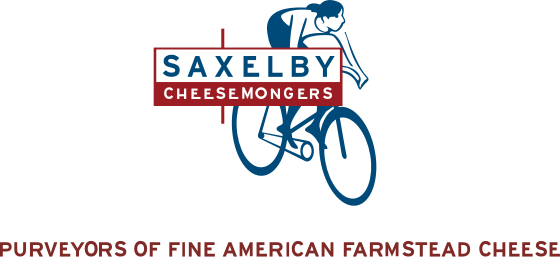It might not seem like it, but cheese, just like fresh strawberries in summertime and hardy root vegetables like beets in winter, is seasonal! Cheesemongers are attuned to the different seasons of cheese and await the arrival of different seasonal cheeses each year with joy and excitement! The seasonal aspects of cheesemaking can be viewed through several different lenses:
First – There is a seasonal change in milk composition according to the cow, sheep, or goat’s diet. Grazing the green grasses of summer pasture will produce different flavors, textures, and aromas in cheese than when the animals are cooped up in the barn over the winter dining on dry hay and grain. Summer milk is also lower in fat than winter milk, which has an impact on the finished cheese.
Second – There is a seasonal change in milk composition depending on where the animal is in her ‘lactation cycle’. It is shocking how many people do not know this (and we do NOT judge because most people don't know this!) but in order to make milk, a cow, goat, or sheep must have a baby. They’re not just milk machines cranking out milk to feed our collective cheese habit, they’re making milk for their babies! Dairy animals generally give birth once a year, thereby keeping the farmer in good supply for making cheese. Early in the lactation cycle the animal produces a smaller quantity of milk, but it is rich, fatty, and full of protein. In the middle, or peak, of lactation, the animal produces more milk, but it is lower in fat. At the end of the cycle production dips again, and the fat and protein levels go back up. Cheesemakers must stay attuned to these seasonal fluctuations in their milk and adjust their cheesemaking processes accordingly to get the results they want!
Third – Not all animals produce milk all year long. Not only do cows, goats, and sheep have different lengths of lactation cycles, there are certain times of the year they don’t make milk at all! Cows are the least picky about when they breed and give milk for the longest stretch at a go. (see chart below!)

Most cow dairies stagger their breeding so that they have calves (and milk!) year-round. Sheep and goats on the other hand, are quite persnickety about when they want to breed. Their hormones are triggered by the shortening of days in the fall, which sends them into a breeding frenzy. They get pregnant, spend the winter on ‘unemployment’ as Laini Fondiller of Lazy Lady Farm says, and give birth / start to make milk in the spring. Mother Nature (as usual!) knew what she was doing. It’s too dang cold for little baby lambs and kid goats to be born in the dead of winter, and on top of it, food is scarce. When the babies are born in the springtime, they subsist on their mothers’ milk and are weaned just in time to trot out to pasture and munch on some good summer greenery. Goats give milk from about March through December of each year, and sheep give milk from about April through September.

In a nutshell, if we were all eating cheese seasonally, we’d relish the return of the fresh goat and sheep cheeses in the late spring, look forward to firmer, well-aged goat and sheep cheeses come fall, and have our pick of the litter of cow’s milk cheese throughout the year.
For more information on the seasonality of cheese, check out our Seasons of Cheese infographic, or purchase a signed copy of The New Rules of Cheese by Saxelby Cheesemongers founder Anne Saxelby.
Shop Saxelby's selection of seasonal cheese! If it says out of stock, it's either temporarily out of stock or not in season. Sign up for our back in stock email to be the first to know when it's back!

